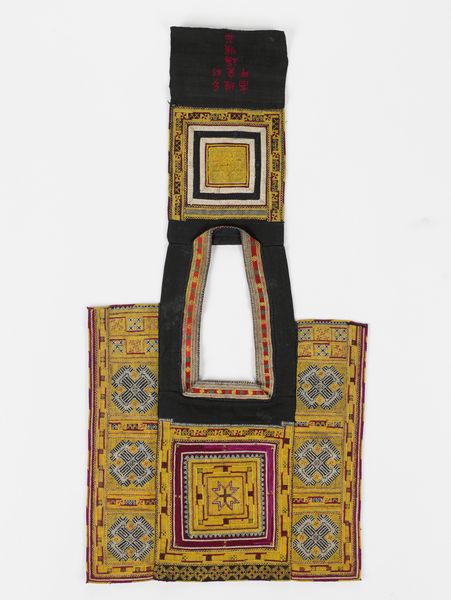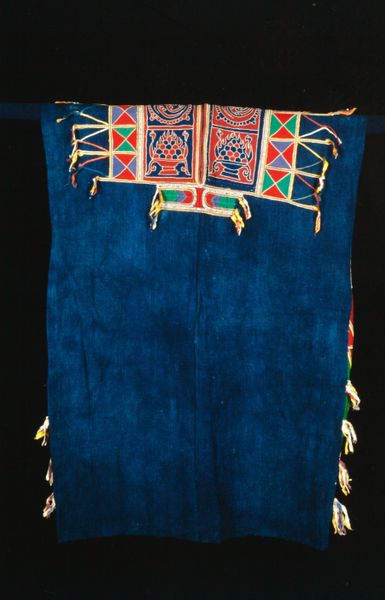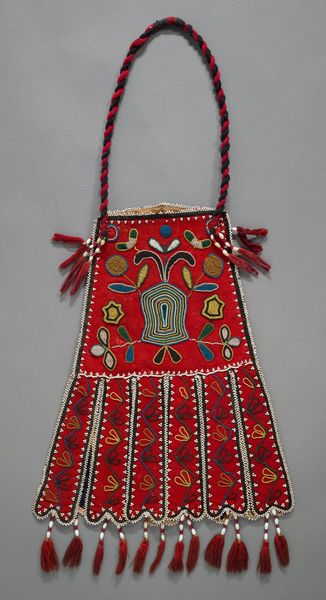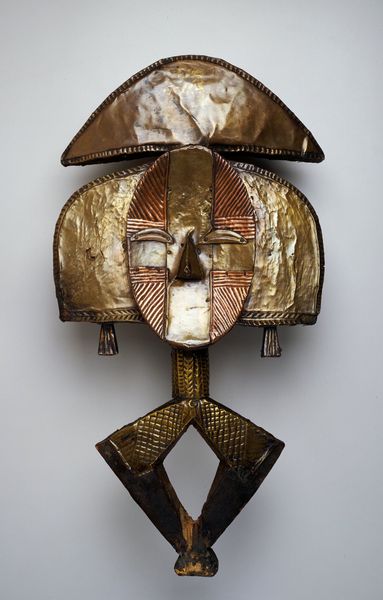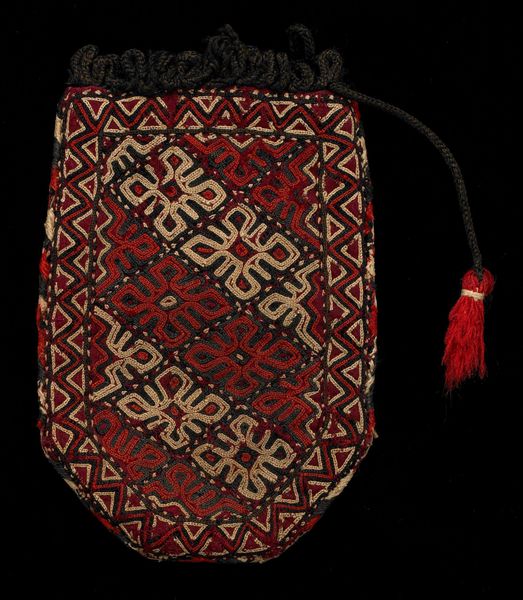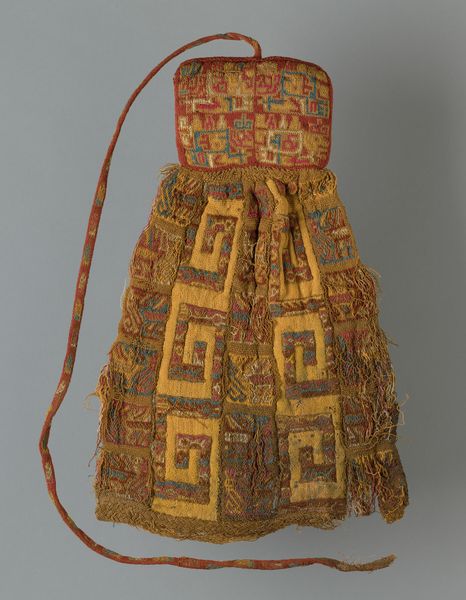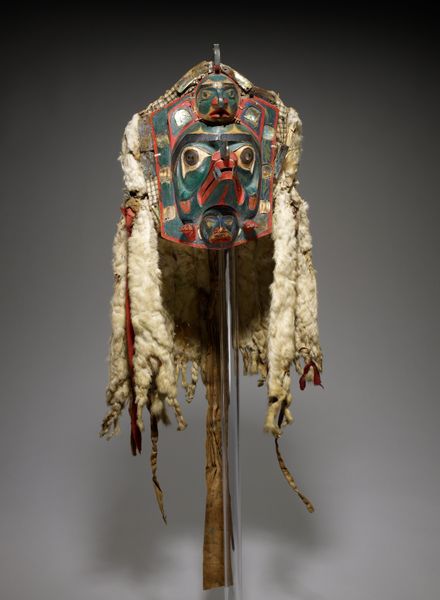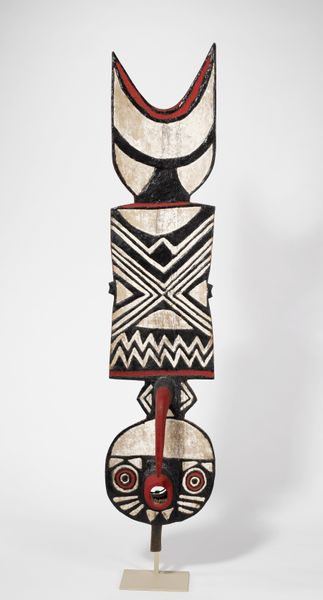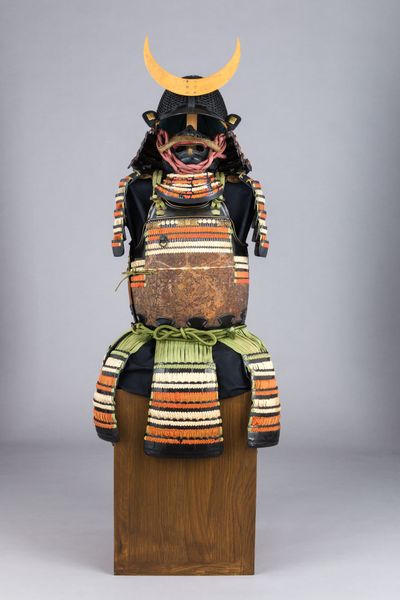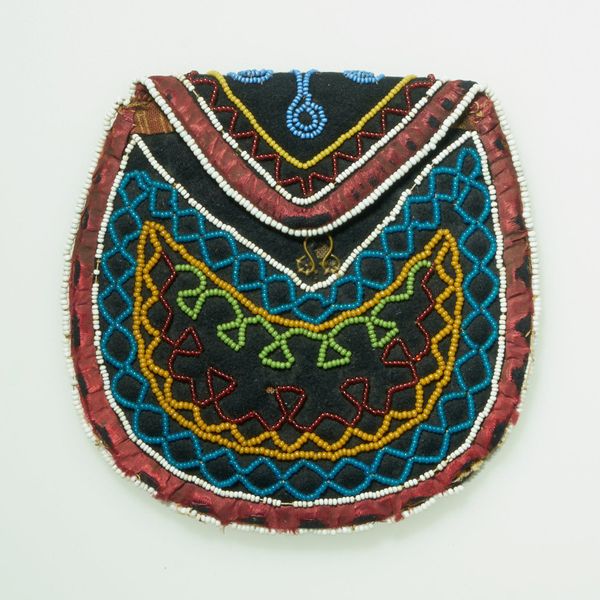
mixed-media, fibre-art, textile
#
african-art
#
mixed-media
#
fibre-art
#
decorative element
#
textile
#
geometric
#
ceramic
#
yoruba-art
#
decorative-art
#
decorative art
Dimensions: 11 x 9 1/2 x 1 1/2 in. (27.9 x 24.1 x 3.8 cm)
Copyright: Public Domain
This beaded bag was made by a Yoruba artist. Notice the intricate beadwork, where geometric patterns dominate. The lozenge shapes and checkerboard designs are visual devices that, in Yoruba culture, often speak to the interconnectedness of the spiritual and physical realms. We see the lozenge echoed across time in varied forms. Think of the ancient Greeks and Romans decorating mosaics with similar keys and guilloche patterns, or the Celtic knotwork that weaves endlessly, connecting all. Here, on this bag, these patterns are not mere decoration. They function as symbolic gestures, a visual language intended to convey deeper meaning. The Yoruba believe in the power of symbols to influence the world. The motifs tap into collective memories, evoking emotions and psychological connections to ancestors and spiritual forces. These are echoes of a shared human experience.
Comments
minneapolisinstituteofart about 2 years ago
⋮
Diviners carry the tools they need for an ifa divination ceremony in a beaded bag. The three faces on this bag refer to Eshu, the messenger divinity associated with the divination process. The face of Eshu is also carved at the top of the tray seen nearby. The beaded flywhisk symbolizes the status of diviners; its many shapes, colors, and designs signal their ability to see what is not usually visible. While ifa originated in West Africa, it is also practiced under different names in Brazil, Cuba, and the United States. In 2005, the ifa divination system was added by UNESCO to the list of “Masterpieces of the Oral and Intangible Heritage of Humanity.”
Join the conversation
Join millions of artists and users on Artera today and experience the ultimate creative platform.



